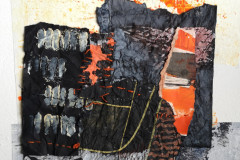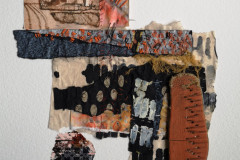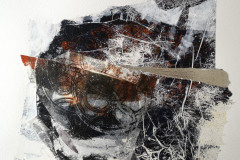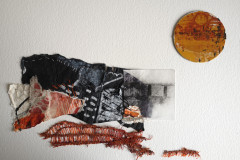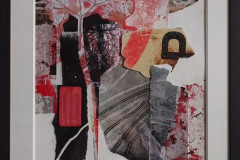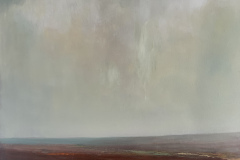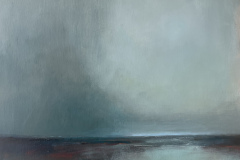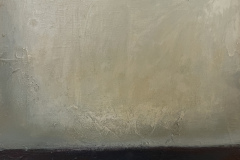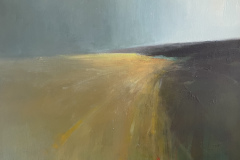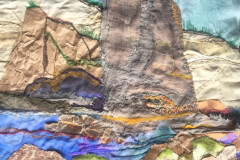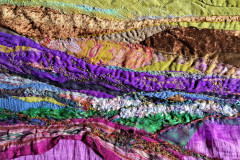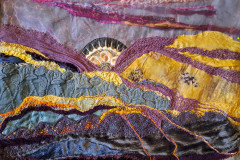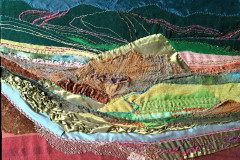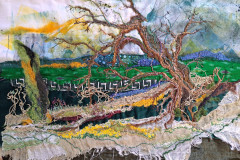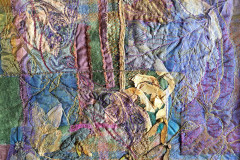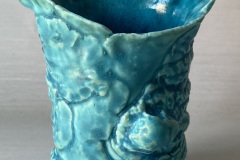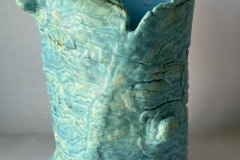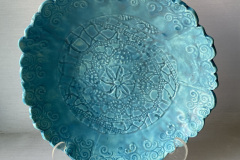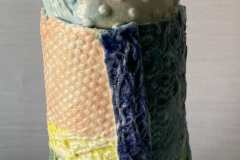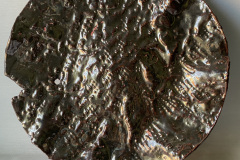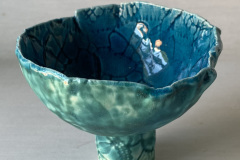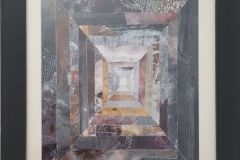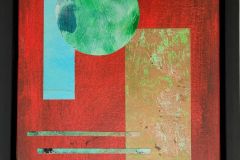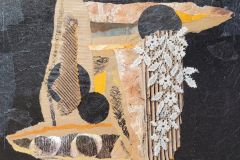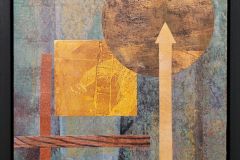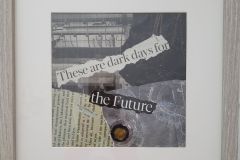Work of Durham Coast Five
Sat/Sun 31st Aug to 27th Oct 11am-5pm. Open during the week by appointment.
Jac Seery Howard M.A. B.Ed (Hons)
Jac earned her MA at Sunderland University and recently took early retirement from a 30 year career in art teaching to concentrate on developing her own art practice. She lives on the Durham coast in the north east of the UK, a coast both blessed by a unique and fascinating geology, but blighted by successive iron, chemical, glass and coal industries, which once earned the coast, the name of the Black Beaches.
She is nonetheless intrigued by her observations of the effects of wind and tide at the site of Seaham’s Blast Beach and how nature is returning this despoiled Anthropocene shore to its former glory.
Jac draws there regularly, as well as using her camera to record industrial ephemera and the surreal stains and decay left by industry. Back in the studio she paints, prints, writes, makes ceramics and assembles beachcombed objects – in fact – uses any medium which feels appropriate to capture the essence of the items that have demanded her attention. She is interested in detail and surfaces, extracting small nuances found in both nature and abandoned objects. She enjoys how they speak of their past, and helping to tell the story of the place.
Working with a variety of materials and processes allows her to experiment with ideas, but observational drawing is a key part of her practice, and almost always her starting point. She says, “drawing makes me slow down, look closely, and really see and understand what I am studying, it tells me what questions to ask.”
When recording starts to feel too literal, drawing with threads, painting with encaustic, assembling collagraph plates to print from or transferring textures to ceramic allows her to re-visit these coastal finds in a more abstract way. Making work that allows the audience to participate is of increasing importance as her art journey progresses.
Michael Elliott
Studied Fine Art during late ‘90s at Sunderland University. Only took up painting again during Covid pandemic after raising his family in East Durham.
Michael paints the landscapes and seascapes of the East Coast, North York Moors and North Pennines. He walks these areas extensively before painting in his studio try to recapture certain colours, moods and emotions of these walks.
Michael primarily paints with oil paint which he sometimes mixes with various mediums such as cold wax.
Jean Spence
My hand stitched textiles all involve collaging and layering of recycled materials and discarded scraps as well as items such as fallen leaves, gleaned from the natural world. Although I use a wide range of fabrics, my preference is for natural silks, cottons, and wool. These materials are more amenable to eco-dying, printing, folding and stitching. Because they are biodegradable, they change over time and bear the marks of their history. Being part of a textile assemblage is but one moment in that history that includes the processes of their manufacture. Mostly I work intuitively with the materials at hand responding to texture, colour and pattern and always striving to show something of the resilience of the natural world. When I begin to work. I often have in mind either a place that I know well or a natural phenomenon such as a season. However, I sometimes allow the idea for the finished piece to emerge and consolidate in the process of stitching. In this case, I start simply by working with a few pieces of material to which I am attracted, placing them next to each other and allowing the ideas to take shape as I stitch them together and embroider over them. My textiles are thus produced organically, resisting pre-planning. They represent my interrelationship with the materials to hand, and my recognition that we are neither outside nor above, but part of our natural environment.
Victoria Leeks
My passion is ceramics, and I am always looking for new ways and ideas to further my practice and push myself forward. After coming back from Hong Kong 26 years ago I took a BA Honours degree and a Masters degree in Ceramics at Sunderland University.
I have worked with Porcelain Paper Clay for many years, and I find it very versatile and forgiving and great to work with. In this body of work, I have pushed myself with new ideas of form, underglazes and glazes.
Dawn Routledge
I have not always been an artist but I have always enjoyed making things in many different forms of craft. The urge to create seemed to be a compulsion.
A big upheaval in my life resulted in my going back into education. I went to college for a year which led to a few years at university where I gained a B.A. (hons) in Glass and Ceramics followed by an M.A.
I concentrated solely on fused glass and after leaving university I worked in this medium for a number of years but had to give it up due to ill health.
I took up collagraph printing after going on a two day course which I thoroughly enjoyed and thought that this medium could replace my love of working in glass. This led onto lino printing, gelli printing and more recently screen printing. There are many printing techniques so there may be more to come!
Learning how to become competent in these methods of print has resulted in prints that are not stand alone works but have interesting elements, these are saved to use in collage. I used to collage many years ago for my own amusement and am now thoroughly enjoying it again learning many different processes along the way.
My inspiration comes mainly from industrial decay and sometimes from nature
